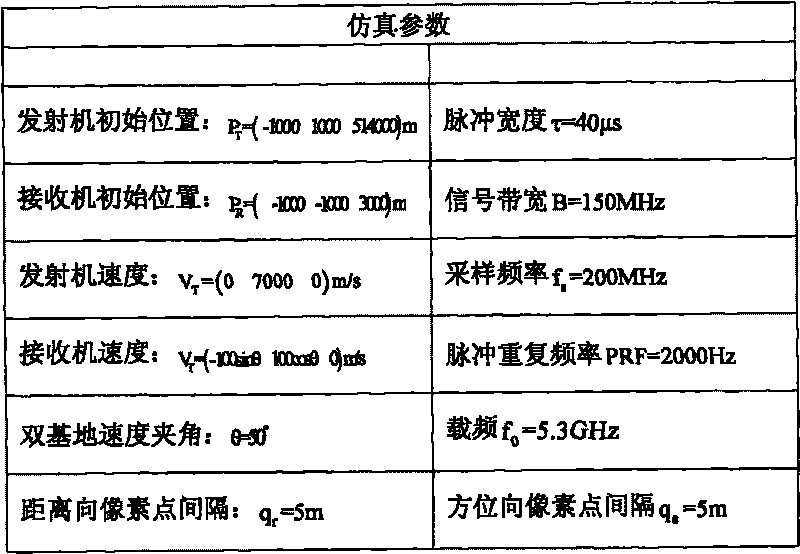Time-domain imaging method of spaceborne-airborne bistatic synthetic aperture radar
A synthetic aperture radar and bistatic technology, applied in the field of radar, can solve the problems of synthetic aperture radar image distortion, unsatisfaction, and inadaptability
- Summary
- Abstract
- Description
- Claims
- Application Information
AI Technical Summary
Problems solved by technology
Method used
Image
Examples
Embodiment Construction
[0070] The present invention mainly adopts the method of simulation experiment to verify, and all steps and conclusions are verified correctly on MATLAB7.0. The specific implementation steps are as follows:
[0071] Step 1. Generate the simulation data of the satellite-machine joint bistatic synthetic aperture radar. The system parameters required for the simulation are as follows: image 3 Shown:
[0072] Step 2. Define the SAR imaging space and initialize the imaging system parameters;
[0073] In this experiment, the unit vector parallel to the velocity direction of the satellite platform and within the ground plane is selected as the first coordinate base ζ of the SAR imaging space v =[0,1,0]; In addition, select the second coordinate base ζ of the SAR imaging space u = [1, 0, 0].
[0074] The system parameters selected in this experiment for initializing the satellite-aircraft joint bistatic SAR imaging method are consistent with those provided in Table 1.
[0075] S...
PUM
 Login to View More
Login to View More Abstract
Description
Claims
Application Information
 Login to View More
Login to View More - Generate Ideas
- Intellectual Property
- Life Sciences
- Materials
- Tech Scout
- Unparalleled Data Quality
- Higher Quality Content
- 60% Fewer Hallucinations
Browse by: Latest US Patents, China's latest patents, Technical Efficacy Thesaurus, Application Domain, Technology Topic, Popular Technical Reports.
© 2025 PatSnap. All rights reserved.Legal|Privacy policy|Modern Slavery Act Transparency Statement|Sitemap|About US| Contact US: help@patsnap.com



